It is the year 2014, and we are in Alice Springs, a large town near the southern border of the Northern Territory. Here, the ancient landscape is beautiful and packed with stories told; the weather often crisp, dry and mildly warm.
But it is, of course, a desert, and the weather rarely remains ‘pleasant’ in deserts. In fact, Alice Springs is known to be one of the harshest and most demanding natural environments in the world.
Enter Dunn & Hillam architects and their clients, who love the warmth and vast views the desert brings. The latter had asked for a house that would engage with its surroundings, but also provide comfortable living spaces. More than that, the house had to be patient, economical, tough yet responsive to the elements, especially with temperatures swinging from highs of 45 degrees to lows of -6 degrees in different seasons.
Today, the completed and aptly named Desert House stands strong, working hand in hand with its environment and orientation. Best described by the architects as a Big Hat (a large angled steel fly roof) over an Esky (R5.66 insulated walls, floors and ceilings), it frames and contrasts the desert landscape, moderating the extremes of the surroundings.
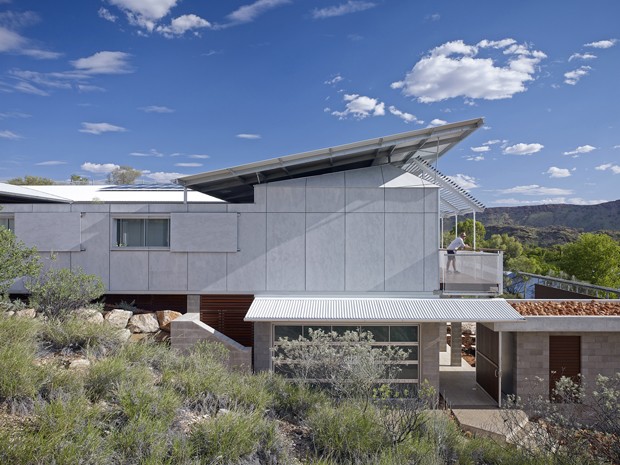
A tough outer skin shields a glazed inner courtyard to moderate the scale and impact of the climate. The lower floor is constructed with reinforced block construction, while the top features prefabricated structurally insulated panels for the roof and walls.
Cut into the rock, the house hunkers down out of the weather. It captures the thermal mass of the rock and uses it to regulate the internal temperatures of the building.
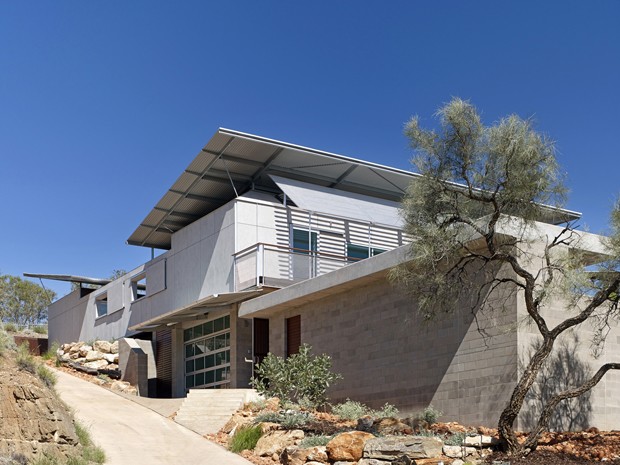
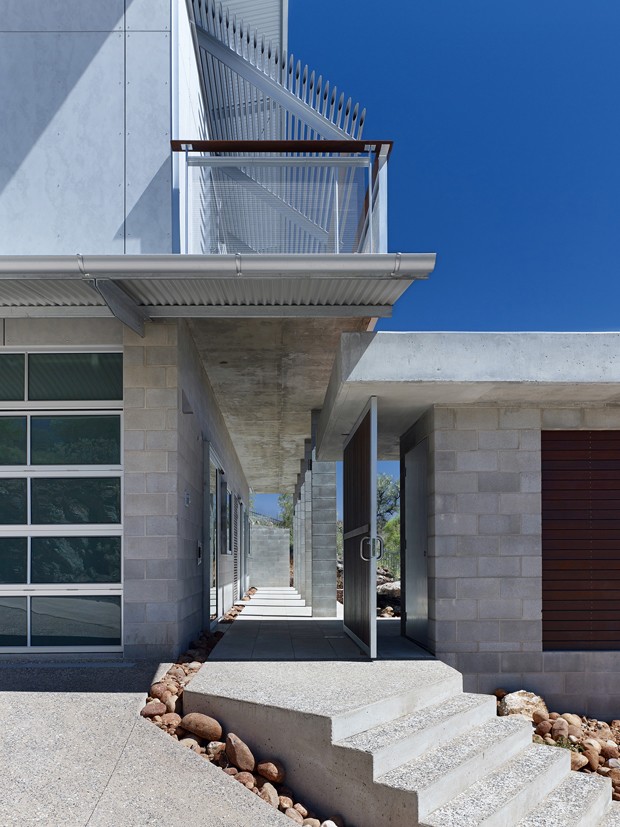
The fly roof prevents the sun from hitting the insulated roof, but the magic happens between the ground and the 'big hat'. Working like a chimney, cool air is drawn from the shaded ground by the thermal movement of the heated air under the fly roof. Low openings in the courtyard walls bring this cooled air into the house via floor level windows, and out through roof openings.
“As the air inside warms up, it rises and is stored in the ceiling area above the habitable space,” the architects explain.
“At night when the air temperature outside drops below the inside temperature, roof vents can be opened to evacuate the warmer air, which is replaced by cool air and the cycle starts over again.”
The hydronic slab and fans provide additional coolth to any heat sources such as people.
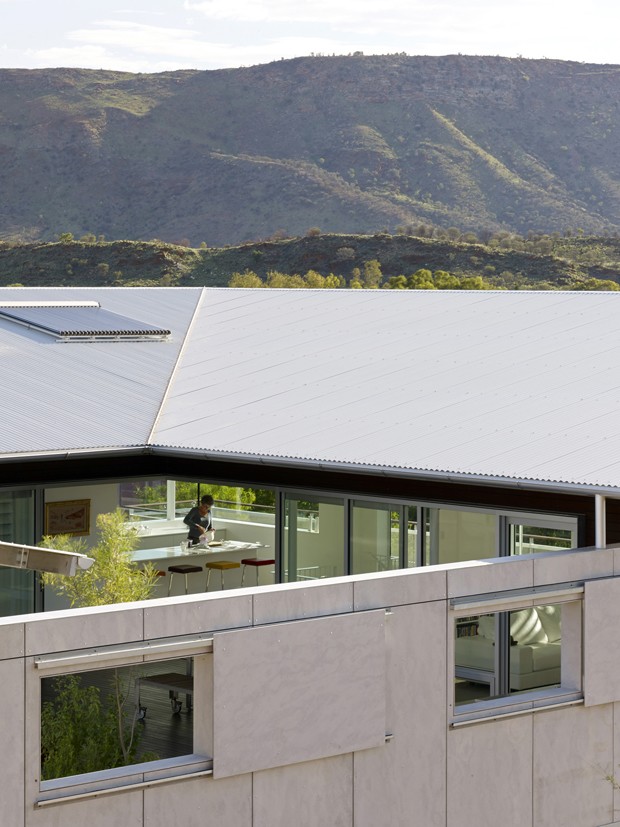
With the owners intuitively responding to temperature changes by controlling the openings, the system has so far worked very well, to the extent that the air conditioning system is rarely used. Coupled with airtight construction, the house is able to maintain a consistent internal temperature of 20 degrees during winter.
The sun is also seen as a friend, not foe, for this project. Photovoltaic panels are used to power the house’s electricity, while evacuated solar tubes provide hot water and heat the floor slab.
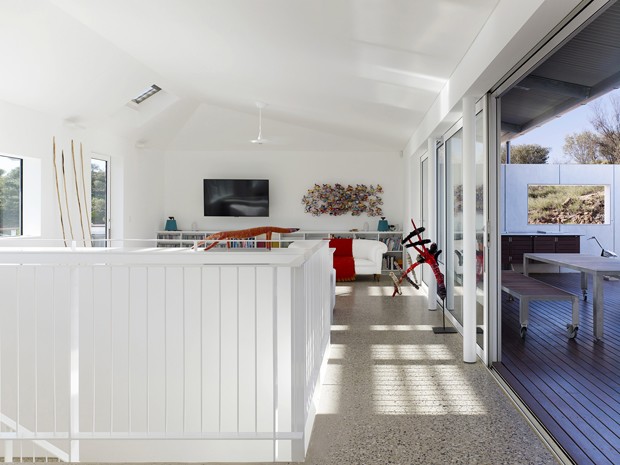
Externally, the Desert House is an earth-coloured shield. Internally, the living spaces are clean, white and dust free, a retreat from the raw façade and bare land. However, the outdoor is re-introduced within, with the courtyard bearing a plot of wild desert terrain against the deck. This space is designed to be an extension of the home, giving occupants the freedom to lounge here if the weather is nice, or retreat indoors when it turns foul.
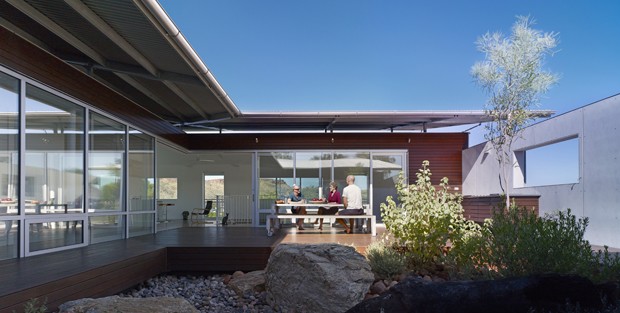
What the architects have created is a new, ‘state of the art’ desert house that can be replicated anywhere in the world. A sophisticated, low energy-consuming machine for living, it opens and shuts, heats and cools efficiently, and shelters and expands, all the while remaining in perfect dialogue with its surrounding.
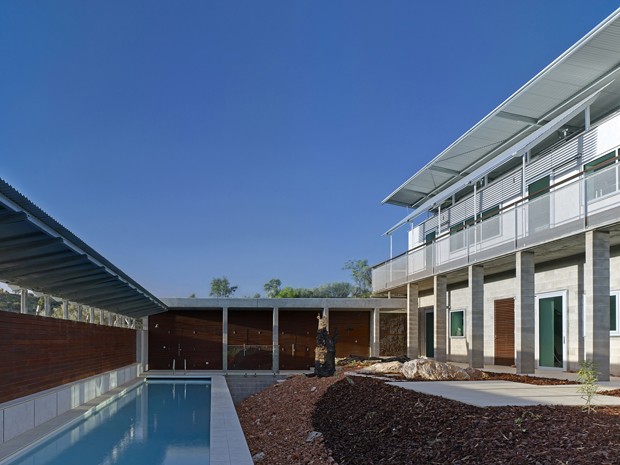
Photography by Kilian O’Sullivan

